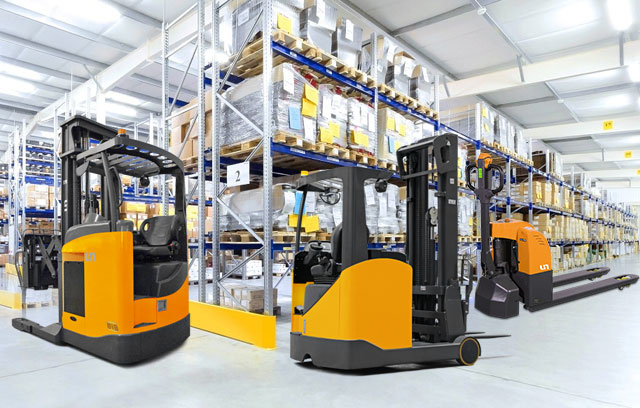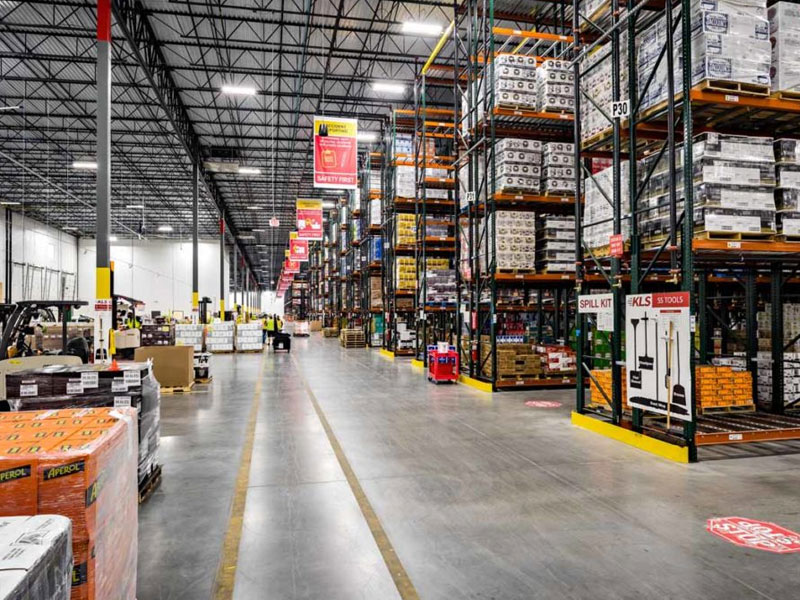Electric forklifts recharge their batteries using various charging methods and equipment. Here's an overview of how electric forklifts recharge and the different charging options available:
Conventional Charging: Conventional charging, also known as overnight charging, is the most common method for recharging electric forklift batteries. In this method, the forklift is connected to a charging station or charging rack equipped with a charging cable and plug. The forklift's battery is then connected to the charging station, and the charging process begins. Conventional charging typically takes several hours to complete and is often done overnight during off-peak hours to minimize downtime.
Fast Charging: Fast charging, also known as opportunity charging or rapid charging, allows electric forklifts to be recharged quickly during short breaks or downtime periods throughout the workday. Fast charging stations are strategically placed around the facility, allowing forklift operators to quickly connect their vehicles to the charging station and replenish their batteries in a matter of minutes. Fast charging systems deliver high levels of current to the battery, enabling rapid charging without compromising battery life or performance.
Opportunity Charging: Opportunity charging involves recharging electric forklift batteries opportunistically whenever the opportunity arises, rather than waiting for the battery to be fully depleted. Opportunity charging stations are strategically located throughout the facility, allowing forklift operators to top up their batteries during breaks or downtime periods without interrupting their workflow. Opportunity charging helps ensure that electric forklifts remain operational throughout the workday and can be used continuously without long charging pauses.
Battery Swapping: Battery swapping involves replacing a depleted battery with a fully charged battery to minimize downtime and maximize productivity. Battery swapping stations are equipped with fully charged batteries ready for use, allowing forklift operators to quickly exchange their depleted batteries for fresh ones. Battery swapping is particularly useful in applications where continuous operation is critical, such as 24/7 warehouse operations. However, it requires additional investment in spare batteries and swapping infrastructure.
Smart Charging Systems: Smart charging systems use advanced charging algorithms and monitoring technologies to optimize the charging process and maximize battery life. These systems monitor factors such as battery temperature, voltage, and state of charge to adjust charging parameters dynamically and prevent overcharging or overheating. Smart charging systems can also prioritize charging based on factors such as energy costs, demand charges, and environmental considerations, helping to reduce overall energy consumption and operating costs.
Overall, electric forklifts have a range of charging options available, allowing operators to choose the most suitable method based on their operational requirements, facility layout, and budget constraints. Each charging method has its own advantages and considerations, and the choice of charging option depends on factors such as charging time, battery life, energy efficiency, and operational flexibility.
- Home
- About
-
Product
-

IC Forklift
Ranges
-

Electric Forklift
Ranges
-

Warehouse Equipment
Ranges
-
- CUSTOMER CARE
- INDUSTRY SOLUTION
- News
- Contact








 中文简体
中文简体 عربى
عربى Español
Español














